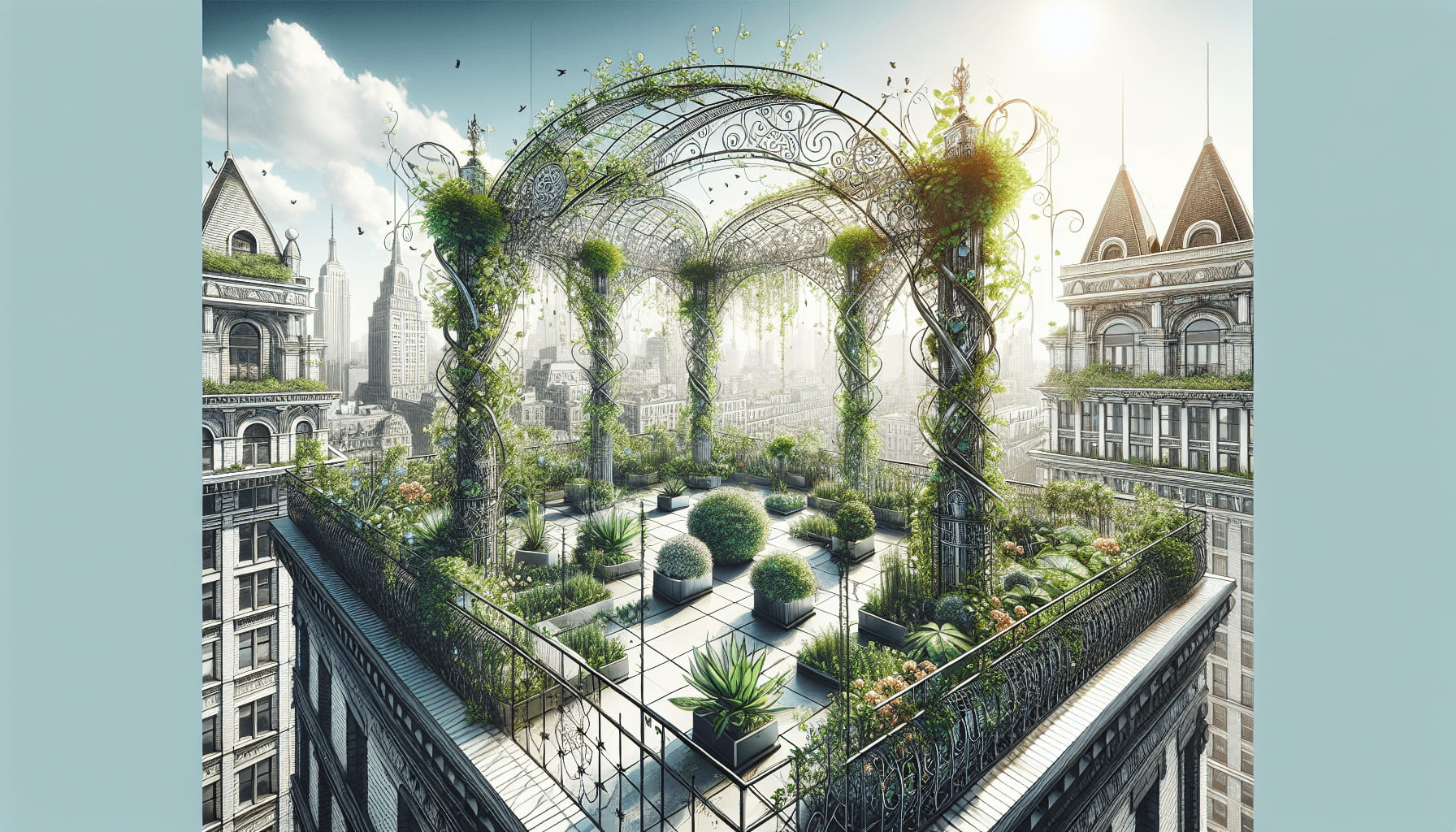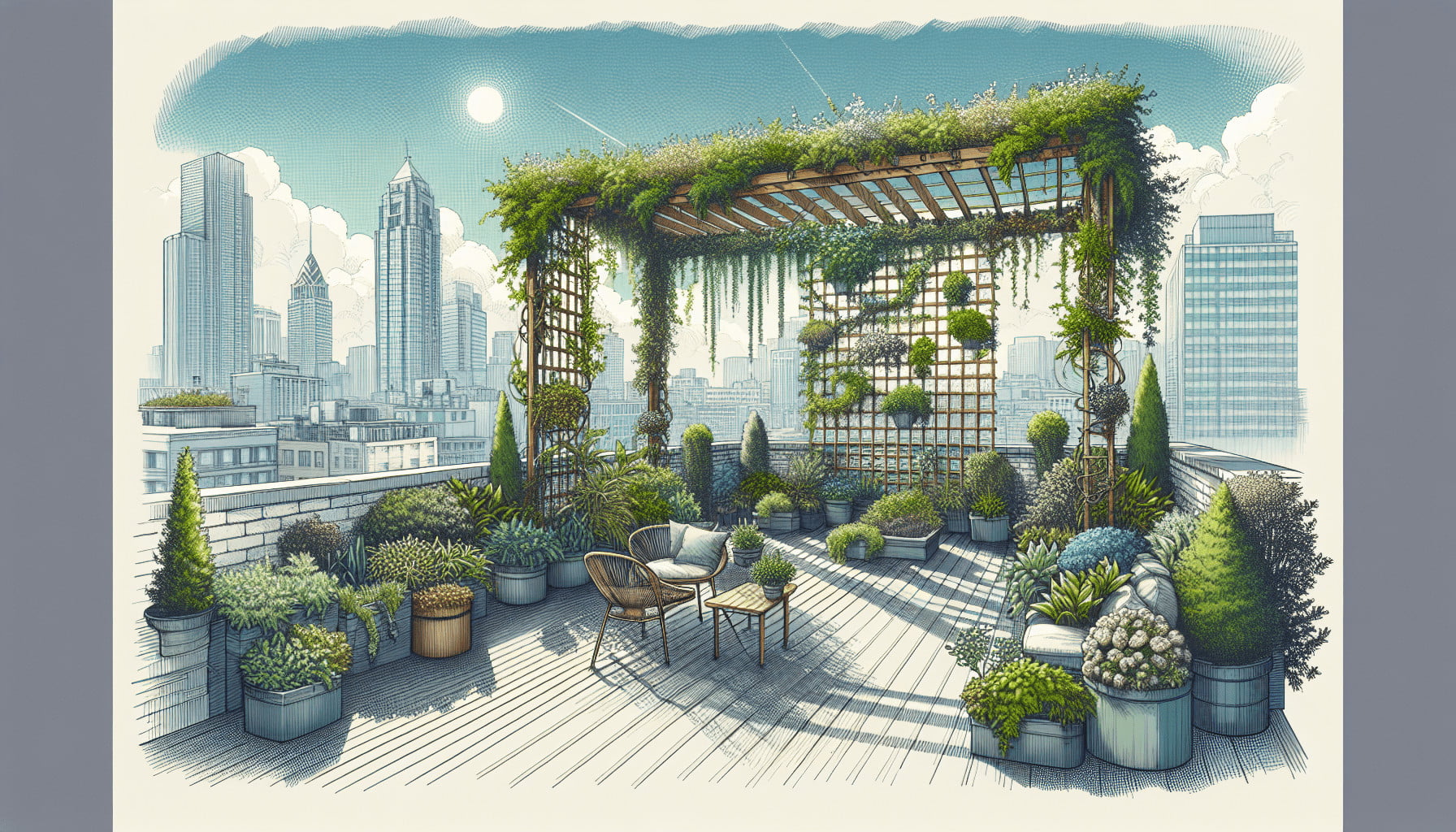Have you ever stood on your rooftop garden, gazed around, and wondered how to maximize the space for your climbing plants? Selecting the perfect trellis can make all the difference, creating a lush green haven while optimizing the available area. This article aims to guide you in choosing the right trellis for your rooftop garden, making the task simpler and more enjoyable. Let’s explore the details to ensure that your climbing plants thrive in their urban oasis.

Understanding the Importance of Trellises
A trellis serves not just as a piece of garden furniture but as a functional plant support system that can enhance plant growth, maximize space, and contribute aesthetically to your outdoor décor. Specifically for rooftop gardens, trellises can provide crucial support for climbing plants, allowing them to grow vertically rather than horizontally. This vertical gardening approach saves space and helps create a more organized and visually appealing garden.
Benefits of Using a Trellis
A trellis offers several advantages that can markedly improve your rooftop garden experience. Here are some key benefits:
1. Maximizes Space: Vertical growth means you can plant more in smaller areas, ideal for urban settings.
2. Promotes Healthy Plants: Supports climbers, ensuring they get adequate sunlight and air circulation.
3. Pest Control: Keeps plants off the ground, making it harder for pests to attack.
4. Aesthetic Appeal: Adds an artistic element, transforming your rooftop into a beautiful garden.
Understanding these advantages helps you appreciate the critical role that trellises play in a thriving rooftop garden.
Types of Trellises
Knowing the different types of trellises available can help you make an informed choice best suited for your garden’s requirements. Below are some common types:
Lattice Trellis
Lattice trellises are typically made from wooden or plastic strips crisscrossed to form a grid pattern. They provide ample space for plants to intertwine and grow vertically.
Advantages:
- Strong Support: Ideal for heavy climbers like grapes and wisteria.
- Versatile Design: Can be used as screens for privacy as well.
Obelisk Trellis
These are freestanding structures that taper off to a point, creating a pyramidal or obelisk shape. They’re great for use in pots and containers.
Advantages:
- Portable: Can be moved around easily.
- Space-Efficient: Consumes minimal ground space while supporting vertical growth.
Fan Trellis
As its name suggests, this trellis fans out from a narrow base to a wide top, providing a great climbing frame for your plants.
Advantages:
- Decorative: Adds a stylish touch to the garden.
- Efficient Use of Space: Widens as it grows taller, offering more climbing room.
Wall-Mounted Trellis
These trellises can be attached directly to walls, making them ideal for small spaces.
Advantages:
- Space-Saving: Mounts vertically, freeing up ground area.
- Supports Heavy Climbers: Sturdy enough to support robust plants.
Archway Trellis
An archway trellis forms a tunnel through which plants can grow, often used to frame pathways or entrances.
Advantages:
- Aesthetic Appeal: Creates a visually appealing entryway.
- Supports Flowering Plants: Great for roses and other flowering climbers.
Here’s a quick comparative table to summarize these trellis types:
| Trellis Type | Key Benefits | Ideal For |
|---|---|---|
| Lattice Trellis | Strong support, versatile design | Heavy climbers, privacy |
| Obelisk Trellis | Portable, space-efficient | Container gardening |
| Fan Trellis | Decorative, efficient use of space | Flowering plants |
| Wall-Mounted | Space-saving, sturdy | Small spaces, robust plants |
| Archway Trellis | Aesthetic appeal | Entryways, pathways |
Factors to Consider When Selecting a Trellis
Now that you’re familiar with the types, it’s essential to consider several factors before making your final selection. Each rooftop garden is unique, and the right trellis for you will depend on multiple factors, including your plants, space, and aesthetic preferences.
Plant Type
The type of climbing plants you intend to grow will significantly influence your trellis choice.
Heavy Climbers: For plants like grapes or wisteria, you’ll need a strong, sturdy trellis like a lattice or wall-mounted type.
Light Climbers: Flowers and small vines can work well with more delicate structures like obelisk or fan trellises.
Available Space
Evaluate your rooftop space constraints carefully. Vertical space can help make up for limited ground area.
- Small Spaces: Opt for wall-mounted or obelisk trellises to maximize floor area.
- Large Spaces: Feel free to experiment with larger structures like archway or lattice trellises.
Material
The material of your trellis also plays a vital role in its durability, weight, and overall look.
- Wood: Offers a classic, natural look but may require maintenance such as staining or sealing.
- Metal: Durable and strong, excellent for heavy plants, but be wary of rust.
- Plastic: Lightweight and easy to maintain, though it might not support very heavy climbers.
Climate Considerations
Your local climate will affect the longevity and performance of your trellis. For instance:
- Hot Climates: Metal trellises may become too hot, causing harm to plants. Consider plastic or treated wood.
- Cold Climates: Wood trellises may crack; treated or dense wood types can offer better durability.
Aesthetics
Your trellis should complement the overall design and aesthetics of your rooftop garden. Choose a style that aligns with your personal taste and the garden’s theme.
Maintenance Tips for Trellises
Once you’ve chosen and installed your ideal trellis, ensuring it remains in good condition is crucial. Regular maintenance will not only enhance its longevity but also ensure it continues to support your plants effectively.
Inspection
Frequently check your trellis for any signs of wear and tear, such as cracks or rust. Address any issues promptly to prevent them from worsening.
Cleaning
Regularly clean your trellis to prevent the build-up of dirt and pest infestations. A simple solution of water and mild soap can often suffice.
Reinforcement
Over time, your trellis may require additional support, especially if it begins to show signs of weakening under the weight of your plants. Add extra supports or brackets as needed.
Seasonal Care
Different seasons will bring different challenges. For instance, in winter, consider covering your wooden trellis to protect it from snow, or applying a protective sealant to prevent moisture damage.
Pruning
Regularly prune your plants to avoid overburdening the trellis. This helps in maintaining its structural integrity and ensures your plants receive the necessary light and airflow.

Creative Implementation Ideas
Having selected and maintained your trellis, let’s talk about some creative ways to integrate it into your rooftop garden.
Vertical Vegetable Garden
Use a sturdy trellis to create a vertical vegetable garden, growing plants like peas, beans, and cucumbers. This setup not only saves space but also makes harvesting easier.
Flowering Tunnel
An archway trellis adorned with flowering plants like roses or clematis can create a stunning flowering tunnel, adding a magical touch to your garden.
Privacy Screen
A lattice or wall-mounted trellis with dense, leafy climbers can act as a natural privacy screen, offering seclusion while beautifying your space.
Multi-Level Garden
Combine different types of trellises to create a multi-level garden. For instance, an obelisk within a pot below a wall-mounted trellis can add depth and dimension to your garden.
Conclusion
Selecting the perfect trellis for your rooftop garden involves understanding various types, assessing your space, considering your plant types, and choosing appropriate materials. The right trellis can significantly enhance your garden’s aesthetics and functionality, promoting healthy plant growth while maximizing available space. With these tips, you’re well on your way to creating an urban oasis that’s both practical and beautiful. For more ideas and inspirations, keep exploring new designs and ideas to keep your rooftop garden thriving and visually appealing.
